A few comments...
Stefano,
No worries on this or any rush. To be honest, I'm not even sure which campaign the missions will fit into, if they fit at all. Right now, I'm thinking along the lines of an extension of the "Royal Canadian Air Force" campaign.
I just know you were working on the Italian bases in that sector, so I didn't think this would be too much of a stretch. One thing though...the Turin layout includes the buildings and scenery at Venaria Reale, so if you've made any modifications there, they will have to be incorporated.
Hi there!

I took a look at your Torino layout and I was was surprised at the total amount of objects involved, in excess of 1,000. I imagine with today's computing power so many objects do not really bother fps, on my vintage rig it's a different story. I imagine any large city scenery is meant only to fulfil a given mission, not as a permanent gsl scenery otherwise the top number of object limit for cfs2.gsl would be reached in no time. Now I do not remember exactly: was it 5,000 or 10,000?
I have a few suggestions for the objects you choose. Wolfi's "Land Houses" are way too British looking, I do not use them at all in Italy. Although they can fit all of Central and Northern Europe (with caution, I wouldn't use too many Tudor-era plaster and timber country houses outside of strictly Northern Europe), they should be removed from both Torino, Genova and any other Italian town or city.
All of Wolfi's Med houses, city blocks and apartments should be used instead, together with Canion's:
- BlFrmHse6, 7, 8 and 13
- BlTwnHse-1 (not BlTwnHse)
Outside of the city centres the percentage of the mix should favour Canion's farm houses, about 75% against 25% of Wolfi's Med objects for Northern Italy, choosing the less colourful ones, while a half and half ratio would fit Central and Southern Italy.
Genova belongs to the Northern group and here you can use the more colourful Med houses in Wolfi's selection, the ones with open windows and balconies, because that's the way it is on the Italian coastline.
The latter is a good combo also for Southern France, particularly the Côte D'Azur, which I visited many times in the last few years. Nice, Marseille and Southern Provence look almost like La Spezia, Genova, Savona and Imperia (East to West), although a whole lot cleaner and well-kept. Typical Provençal houses are painted various shades of orange, light earth tones or left with natural bricks with blue doors, windows, window shutters and trim.
Keep in mind 1940's Italy was a wood-poor country, even more so today, so avoid wood buildings of any kind: they can be found only in the Alps here. Stone and bricks, that's the correct look.
One last remark about Canion's farm houses: the ones numbered below 6 are very small buildings, which fit nicely airport infrastructures like radio buildings, small depots, workshops and such. As you must have certainly noticed, I used them all over in my ETO/Italy airport GSL work.
I know you need "target-rich" environments for your mission work, but refrain from placing oil refineries in Italian large cities. I am quite positive Torino never had one, while FIAT factory was certainly a primary strategic target for its contribution to the fascist war effort. FIAT is the acronym for "Fabbrica Italiana Automobili Torino" (
Italian Car Factory Torino).
Attached three maps, plus pictures, of the FIAT factory historical location in Torino. In the sat picture the "Lingotto" (italian for "ingot", from the shape of the building) can be clearly seen with its test track built on the roof of the building. In order to save room, in the historical FIAT factory the vehicle assembly line developed upward from the ground floor. Completed vehicles reached the test track on the roof, they were started for the first time and test driven on the track before leaving the factory. FIAT production remained in this location until the early 1960's, when the new Mirafiori establishment was built and only administration offices remained at the Lingotto building.
In the late 1980's, FIAT donated the Lingotto building to the town of Torino and it was turned into a cultural centre, with a music hall, a car museum (what else?), a conference hall and it can be visited all year round. The test track on the roof is still there, it can be visited and a restaurant (...expensive...) was built there as well.
Thank you for your continuous effort to provide us with attractive sceneries!
Cheers!
KH 




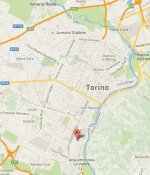
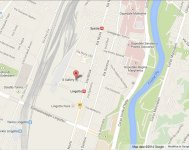
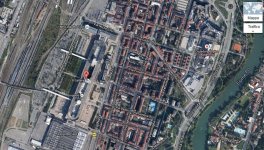
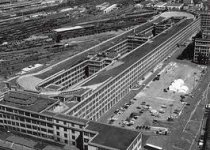
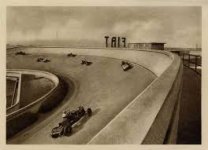
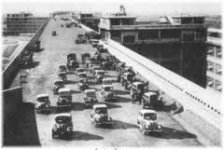

 ......
......
 hopefully, Chrysler will bring some quality into Fiat products....
hopefully, Chrysler will bring some quality into Fiat products....